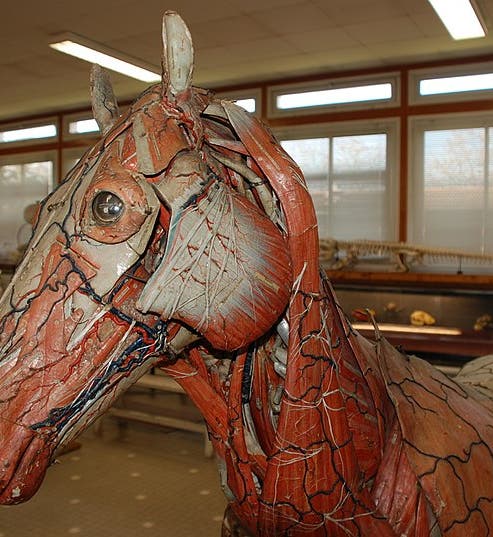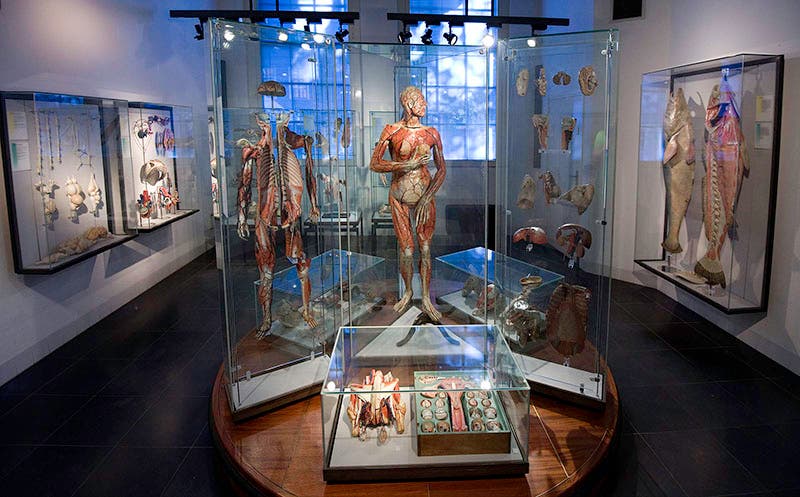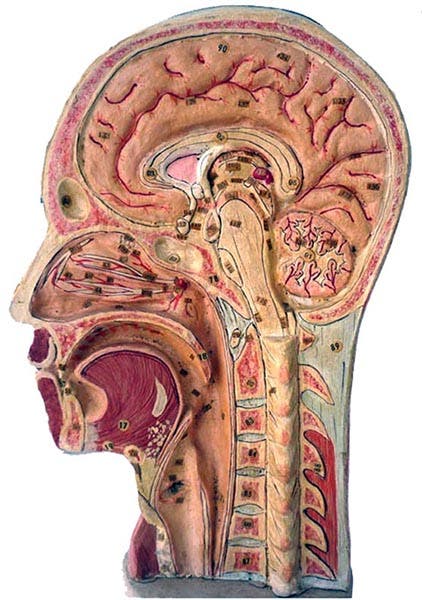Scientist of the Day - Louis Auzoux
Louis Thomas Jerôme Auzoux, a French physician and model maker, was born April 7, 1797. While in medical school, Auzoux appreciated the utility of the life-size wax models that were then used to aid instruction in anatomy, but wax models were fragile and could not be easily taken apart and reassembled. In Paris. he encountered a manufacturer of papier-mâché dolls, and he wondered if it might be possible to make papier-mâché anatomical models that would obviate the shortcomings of wax models.
Around 1825, Auzoux established a company to make such models, and before long, they were in use everywhere. Auzoux’s firm was successful in this highly competitive business because he was able to mass-produce his models, using high-pressure injection molds, and because he had a secret and better formula for his papier-mâché, giving it a durability that was lacking in competitors’ models.
Auzoux started out making models of humans and their vital parts (fourth, fifth, and sixth images, below), but the firm soon branched out into the field of comparative anatomy. Apparently, they found a ready market in veterinary schools for papier-mâché horses, if one is to judge by surviving photographs and models. The Auzoux horse that we used for our opening image, now in a veterinary museum in Toulouse, is quite a charmer.
One of the big advantages of Auzoux’s models is that they were designed to be taken apart, and sturdy enough to survive med student curiosity. Our next-to-last image shows a silkworm, with the top removed to show its innards. Notice the metal clasps that secure the top, and note as well that they have not pulled away from the papier-mâche carapace, indicating that Auzoux’s secret formula for his papier-mâche was apparently an exceptionally good one.
There are quite a few Auzoux models surviving and on display in museums around the world. The Rijksmuseum Boerhaave in Leiden has an entire room full of anatomical models and claims to have 70 Auzoux models among them (third image). There are undoubtedly some Auzoux models in U.S. museums, although I did not run across any in my searches for images. If there are readers that know better, please let us know.
Auzoux died in 1880, but his company kept right on going. There is a photograph that shows the workshop staff assembled outside the factory (eighth image, just above). The photo is tentatively dated 1870-1900, so Auzoux could have been still alive when it was taken, but the presence of a memorial bust of Auzoux high up on the wall suggests that this was taken after his passing. There are several papier-mâche humans standing among the crowd, although it is difficult to pick them out. Note that the papier-mâché fish perched on the laps of three of the female workers appears to be the same model as that on display in the Museum Boerhaave (third image).
Why someone would make a bust of Auzoux out of bronze, and not papier-mâche, is a mystery to me.
Dr. William B. Ashworth, Jr., Consultant for the History of Science, Linda Hall Library and Associate Professor emeritus, Department of History, University of Missouri-Kansas City. Comments or corrections are welcome; please direct to ashworthw@umkc.edu.













